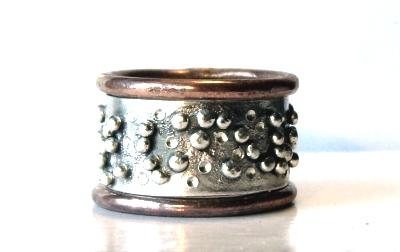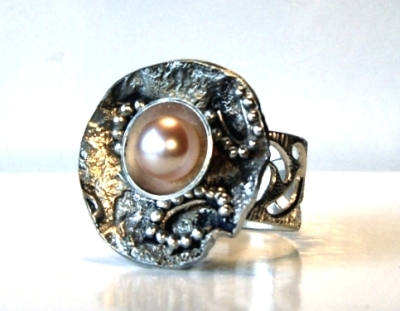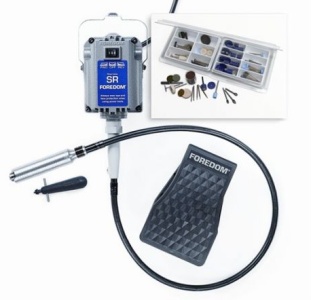 Granulation is a jewelry making technique used for decorating surfaces of gold and silver jewelry. Granules are small spheres of the same metal as the pieces of jewelry, and they are attached to (preferably) pure gold or silver.
Granulation is a jewelry making technique used for decorating surfaces of gold and silver jewelry. Granules are small spheres of the same metal as the pieces of jewelry, and they are attached to (preferably) pure gold or silver.The process of attaching granules is so old that different sources ascribe it to different civilizations, such as Etruscan, Sumerian and Egyptian. It is believed that the first samples were found in Mesopotamia in the third millennium BC, and work of later dates has been found in Anatolia, Syria, Egypt, Cyprus, and Mycenaean Greece.
 Sumerians were improving the technique in 2500 BC. Although granulation might have first been used by the Sumerians, it was the Etruscan who truly developed the technique' possibilities. The Etruscans really excelled in granulation. Not only was it used in the formation of patterns, but also to illustrate entire scenes.
Sumerians were improving the technique in 2500 BC. Although granulation might have first been used by the Sumerians, it was the Etruscan who truly developed the technique' possibilities. The Etruscans really excelled in granulation. Not only was it used in the formation of patterns, but also to illustrate entire scenes.Nevertheless, when we mention granulation we think of Egypt. Why does this happen? There is no mystery in it. Egypt produced 80% of the world gold output in ancient times. They colonized Nubia for its gold and invented mining. By the 2nd half of the 3rd millennium BC Egypt was circulating gold rings of standard weights as money. The Middle Kingdom, 2040-1730BC, marks a high point in the art of the Egyptian jeweler. Chasing, repousse, inlaying in cloisonne and granulation were used.
This is one of the most ancient techniques in jewelery history, but it has been considered modern at different times. It is modern again. These days when hand made accessories are thought after granulated jewelery is considered the top of the line. It cannot be faked. It is always one-of-a-kind. It is contemporary in design and historical in technique, making it timeless and forever fashionable.
Natalia Khon
http://nataliakhon.com/classes.htm
Natalia Khon
http://nataliakhon.com/classes.htm






























0 comments:
Post a Comment